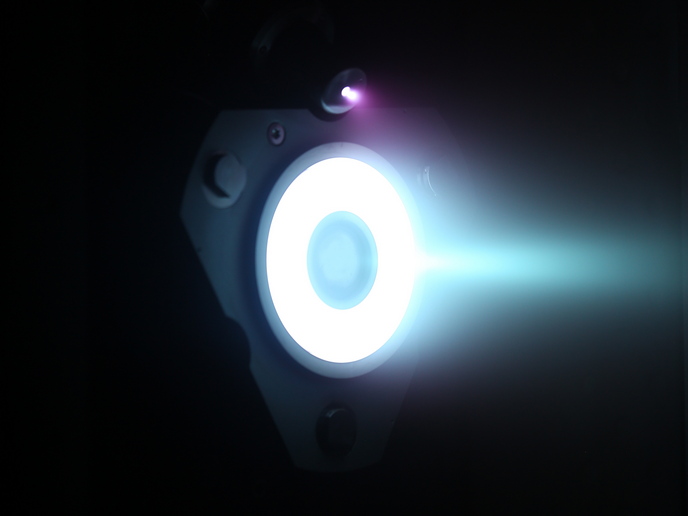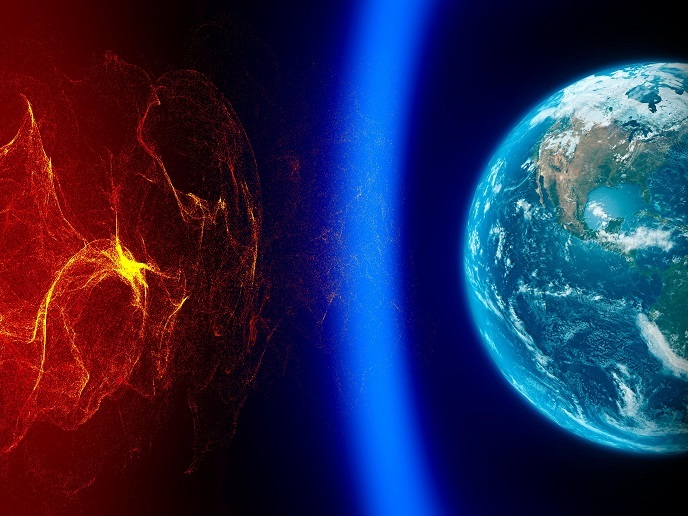Improved low-power electric propulsion holds promise for future satellite networks
The satellite industry is rapidly evolving, especially in the low and medium Earth orbit (LEO/MEO) sectors, pushing Europe to innovate swiftly to enhance its strategic position globally. Achieving high performance, compatibility with mass production, quick adaptability and competitive prices are crucial for Europe’s success in the satellite market. To cater effectively to this target market, low-power electric propulsion systems need to be highly flexible, capable of operating with both xenon and krypton propellants across a wide power range, up to 1 kW.
The dawn of low-power thruster systems
Building upon the successes of CHEOPS I, the EU-funded CHEOPS LOW POWER(opens in new window) project aims to bring incremental advancements with regards to the first European low-power electric propulsion system by early 2025. The research focuses on key components such as the Hall-effect thruster unit and the fluid management system reaching technology readiness level (TRL) 7, as well as the power processing unit achieving TRL 6. “We seek to overcome challenges related to compactness, modularity, extended service life, low costs and high production rates, and flexible propellant management,” notes project coordinator Vanessa Vial. “We also target the introduction of a qualification strategy for the thruster unit to lower recurring costs through a standardised approach for all customers.” To achieve these goals, CHEOPS LOW POWER is adopting a design-to-cost strategy, using commercial off-the-shelf components and implementing lean production approaches. It intends to leverage new technologies and develop advanced numerical design tools for electric propulsion to better predict thruster performance and behaviour in its operational environments. Moreover, researchers will seek to standardise Hall-effect thruster diagnostics, laying the groundwork for its upcoming in-orbit demonstration.
Accelerating innovation in low-power electric propulsion
By the end of the first project phase, functional and mechanical tests have confirmed that the thruster unit, power processing unit and fluid management system are compatible with both xenon and krypton propellants, achieving up to 1 kW power. Their performance met or even surpassed current benchmarks in the field. A major milestone was reached with the successful completion of the functional design review of the low-power electric propulsion system in 2023. Coupling tests are on the agenda for mid-2024, with the qualification status review planned for the end of this year. Researchers have also enhanced HYPHEN-2, a multi-thruster simulation platform, by implementing new algorithms that more accurately represent plasma discharge, thruster design and boundary conditions. The improvements expanded the tool capabilities to evaluate alternative propellants and estimate thruster system lifetime. They also achieved a significant reduction in simulation time by 33 %. Diagnostic methods have been refined and expanded to further understand and analyse plasma parameters within the thruster system. Optical emission spectroscopy combined with a collisional radiative model has proved effective during test campaigns. Test results were compared with those from Langmuir probe(opens in new window) measurements, revealing a high degree of similarity in the internal plasma parameters obtained. “Such findings underscore the value of optical emission spectroscopy as a non-invasive diagnostic tool. Its implementation in testing facilities and in-flight monitoring holds promise for the real-time detection and monitoring of critical parameter shifts,” explains Vial. Moreover, time-resolved laser-induced fluorescence has been instrumental in correlating transient or oscillatory behaviour of the thruster unit with the underlying physics which cause instabilities or oscillations. “By 2025, CHEOPS LOW POWER is set to revolutionise the LEO/MEO satellite markets worldwide, particularly the satellite constellation sector. Over time, the initiative aims to transform the satellite design and manufacturing sector by pioneering an approach that integrates industry capabilities and client needs right from the outset,” concludes Vial.







